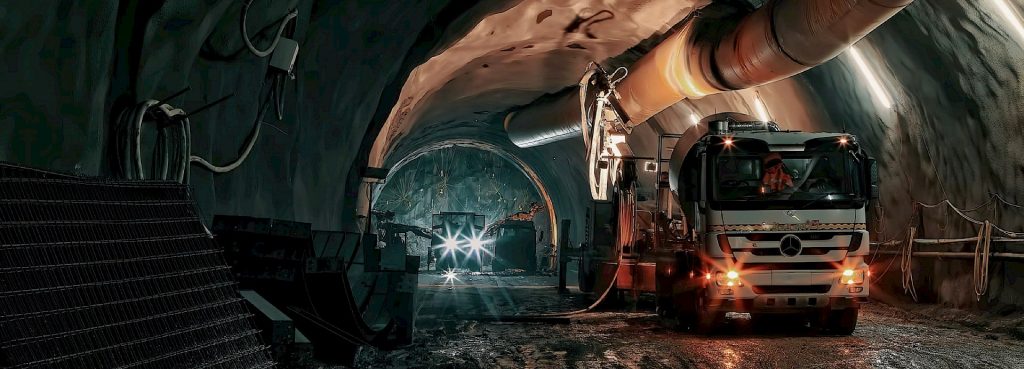Silver Hammer Mining drills 2.9 g/t gold over 8.4 metres at Silver Strand, Idaho

Silver Hammer Mining Corp. [HAMR-CSE; HAMRF-OTCQB] reported drill results from the phase II drilling program at its past-producing Silver Strand project, Idaho. The company completed nine drill holes from its previously established underground drilling station that were generally focused on testing the historically mined zone of gold-silver mineralization at greater depth and further along strike.
Key Highlights and Takeaways: Six of the nine drill holes returned >100 g/t Ag and/or >1 g/t Au intercepts. SS22-017 intersected 2.9 g/t Au over 8.4 metres, including 4.4 g/t Au and 74.5 g/t Ag over 1.8 m, demonstrating the potential for significant gold grades at Silver Strand.
SS22-015 intersected three mineralized zones, including 613 g/t Ag over 0.5 metres extending mineralization to 65 mettres below historical workings. SS22-18 also intersected multiple zones: 212 g/t Ag and 0.67 g/t Au over 1.5 metres, and 2.45 g/t Au and 8.9 g/t Ag over 4.4 metres.
SS22-011 intersected 115 g/t Ag and 2.0 g/t Au over 0.7 metres within a broader 5.5-metre interval of lower grade Ag mineralization, and an additional 9.9 g/t Ag and 1.7 g/t Au intercept over 2.1 metres further downhole in an area with no previous drilling.
2022 drilling results extend mineralization further along strike to the northwest, southeast and to depth.
“These new results demonstrate consistent gold and silver values in mineralization beneath and adjacent to the historical mine workings at Silver Strand,” stated Interim President and CEO, Warwick Smith. “We are particularly encouraged to see elevated gold values in mineralization extending beyond our previously modeled and interpreted zone that was based on limited historical drilling. We believe we are still very much in the upper part of the structurally controlled Ag-Au system and these new results from a modest (667 m) and cost-effective drilling program coupled with our recently completed geophysics point to the potential for additional lenses of mineralization that we can pursue in subsequent drilling campaigns.”
A total of nine HQ (6.35 centimetre) core holes were completed by local drilling contractor, Nasco Industrial Service and Supply (NISS), totaling 667 metres (“m”). Eight of the nine holes, drilled from an underground drilling station established by the company, encountered mineralization within the anticipated structural and silicified zone which measures 30 metres wide over a 170-metre strike length to-date. This structural zone is defined by multiple, near-vertical fractures some of which are intruded by post-mineral mafic dikes that can be traced along the surface by magnetics surveying.
The results from the Phase II drilling program at Silver Strand demonstrate that the mineralized system continues well outside of the previously mined areas. Drillholes SS22-009, SS22-011, SS22-012, and SS22-013 were designed to test to the southeast beyond the modelled Silver Strand mineralization. Three of these drill holes successfully intersected Au-Ag mineralization and lend support to the company’s view that the known Silver Strand zone can be extended to greater depth and that there is good potential for additional mineralized ‘chutes’ along strike. Besides yielding encouraging intercepts of Au-Ag mineralization the Phase II drill holes confirmed that the known mineralization is hosted within a 20 to 40-metre wide zone of pervasive silicification that is superimposed on fractured quartzite rocks believed to belong to the Revett formation, the most productive ore-hosting formation in the Coeur d’Alene mining district. Also, the drill holes intersected at least four post-mineral mafic dykes that are interpreted to have been intruded into the quartzites along structures some of which had already acted as conduits for the precious metal-enriched hydrothermal fluids. In fact, the better mineralized intercepts are found along the faulted contacts of a number of the mafic dykes.
Going forward, the company will be updating its 3D model of the Silver Strand deposit, incorporating lithological and alteration information as well as the multi-element geochemical data produced by the drill hole assays from the two drilling programs. The new model will then be examined in the context of the existing magnetics and induced polarization survey data the company has acquired over the known mineralization. It is anticipated that a geophysical ‘signature’ will be defined for the Silver Strand structure which will allow it to be traced across the property, a potential strike length of 5 km. This will then translate into new high-potential drill targets being defined on the 5.85 km2 property.
Estimated true thickness’ range from 50% to 90% depending on the angle of the drill holes.
